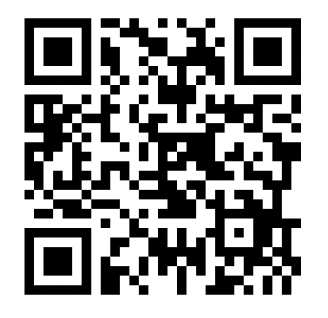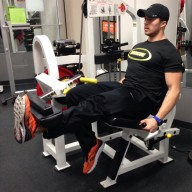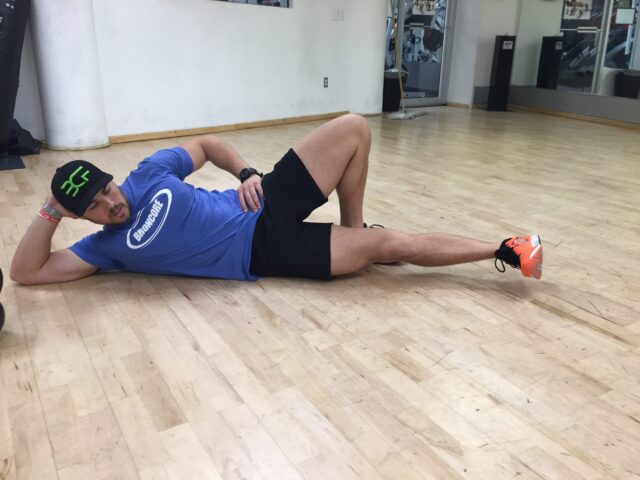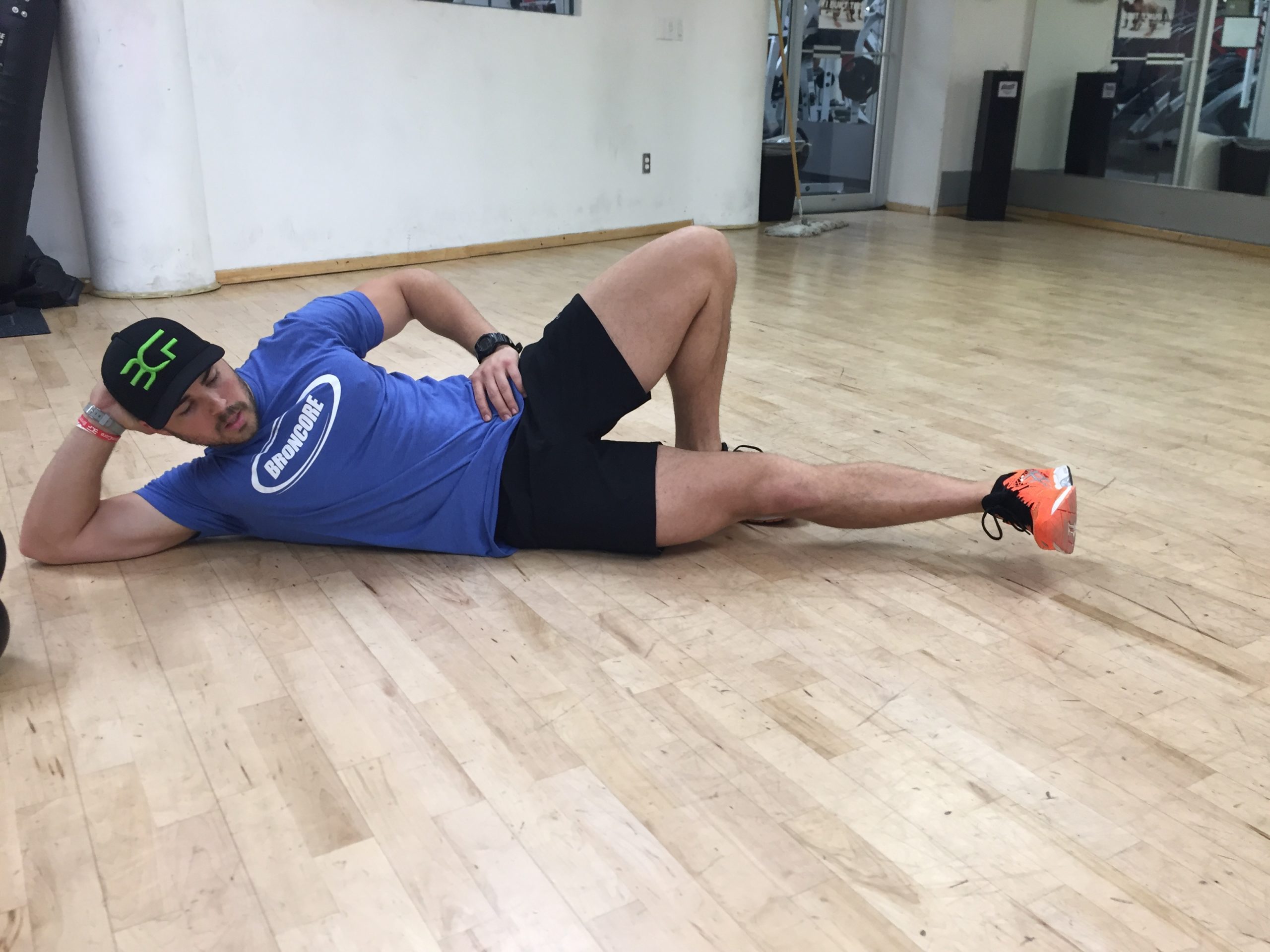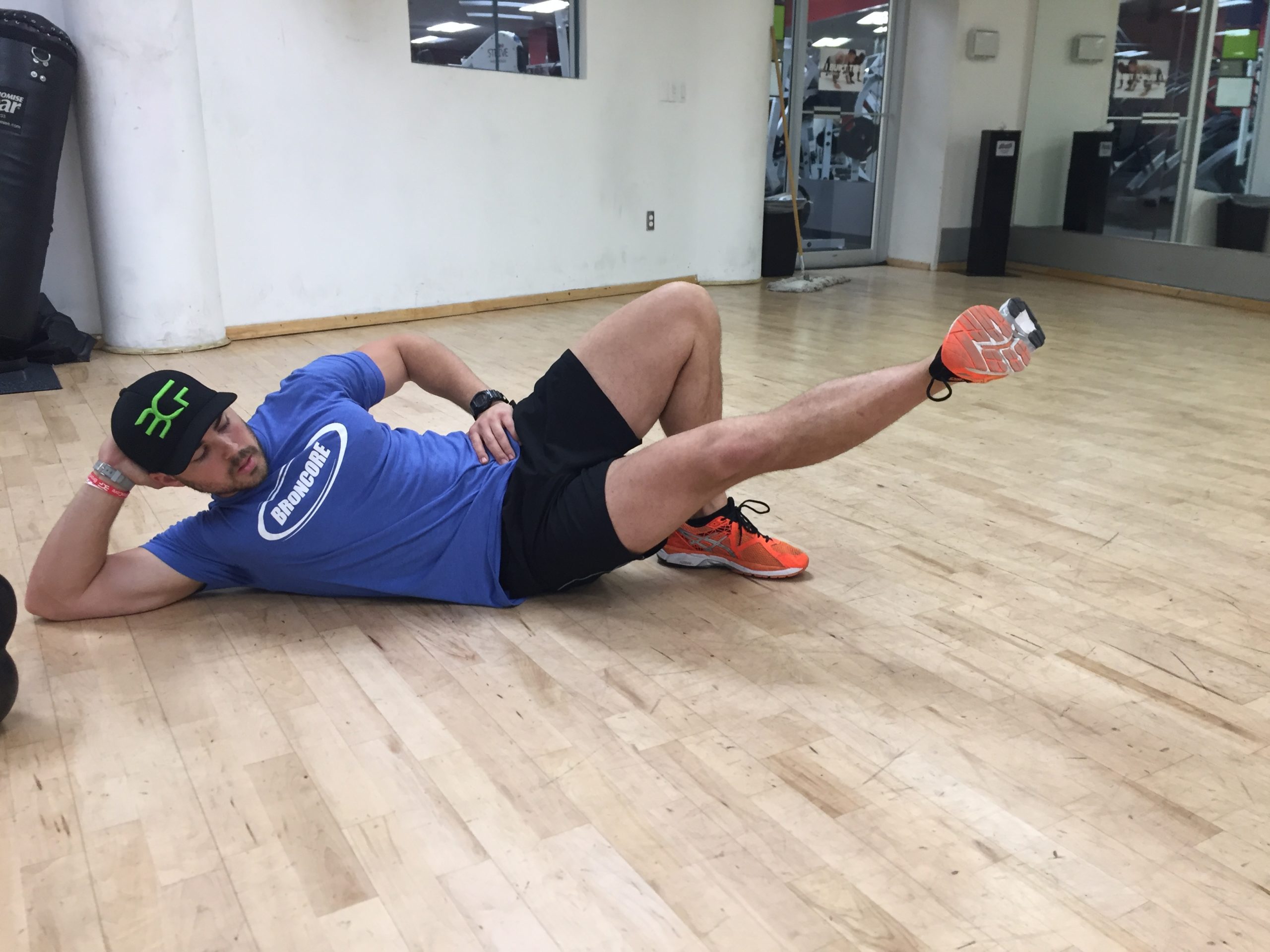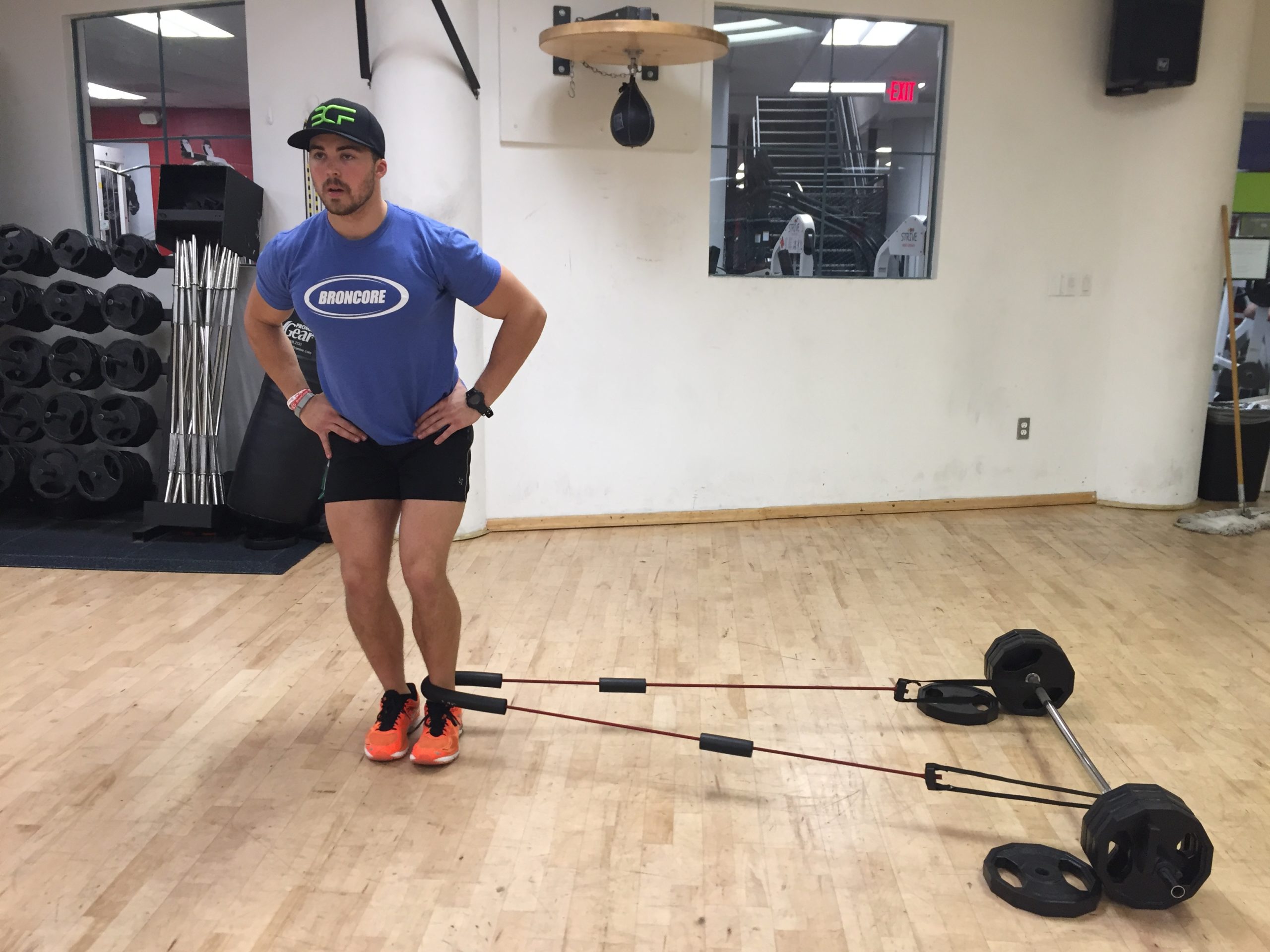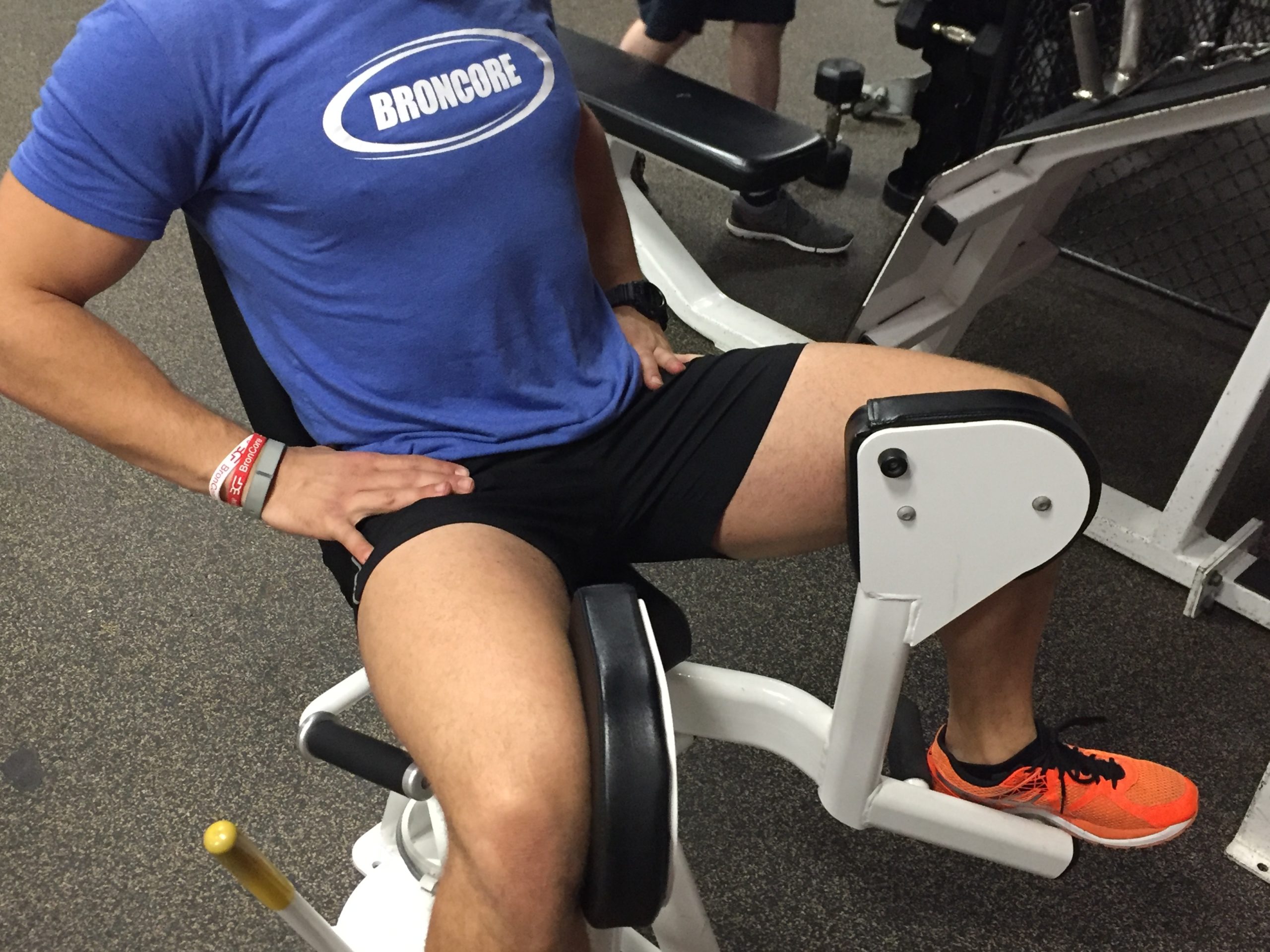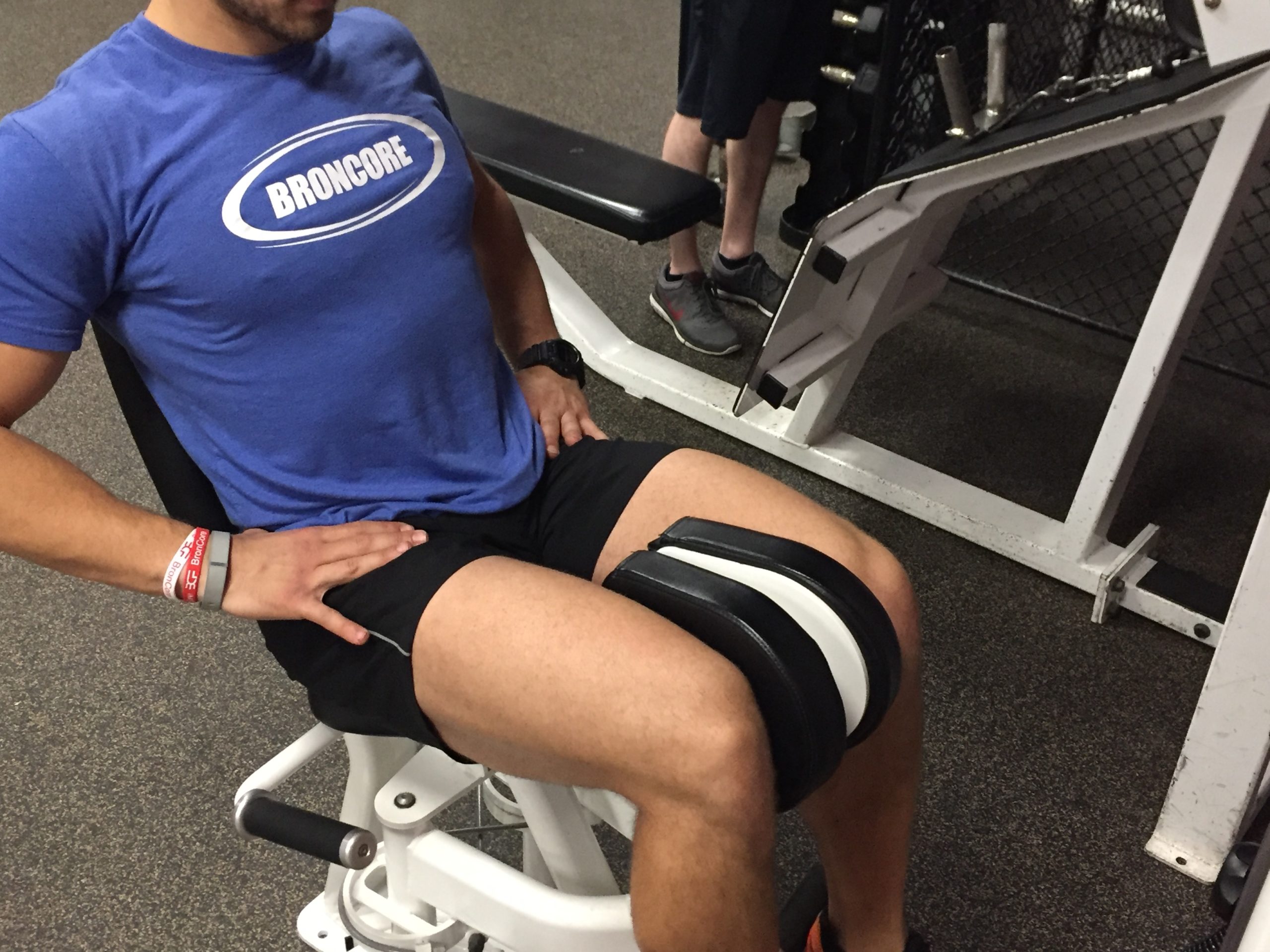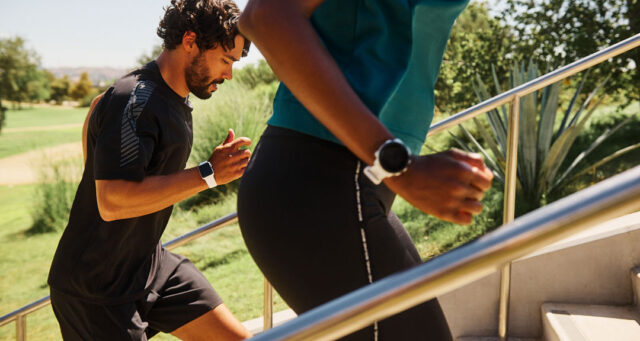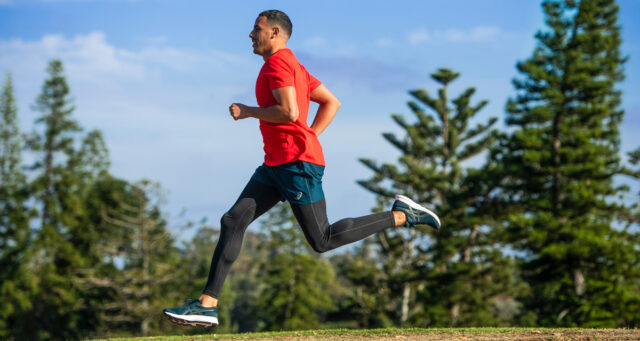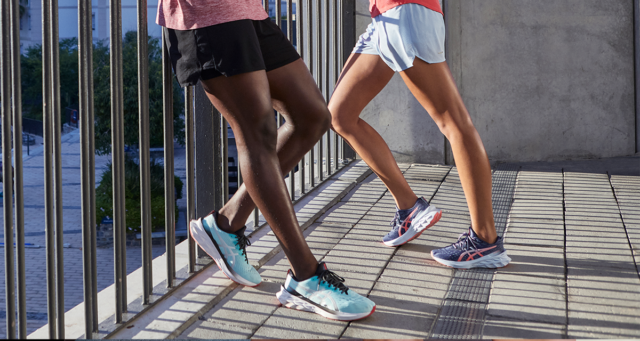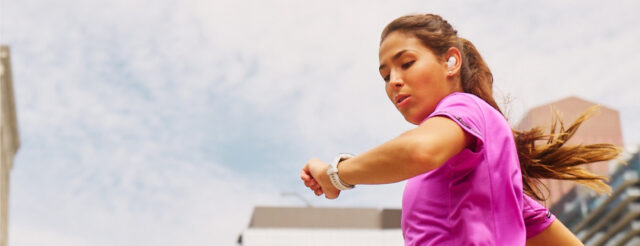Over the past couple of weeks I’ve introduced some strength and stretching exercises to help balance out some of the body’s largest muscle groups like the glutes, hamstrings, and quads. While it’s important to pay attention to what is going on with these larger muscles we don’t want to forget about smaller muscles and tendons that can have a huge impact on our running.
The adductors are a group of muscles around the thigh and they are responsible for bringing the leg toward the center line of the body. While this motion is not the first thing that comes to mind when running, strong adductors can help improve stability and running efficiency. Below, I’ve listed my three favorite adduction exercises.
Side Lying Adduction Leg Lifts (25 reps)
During this exercise be sure to keep your foot parallel with the floor the entire time. The minute you rotate your toe up toward the ceiling, you begin to bring in the hip flexors and take away from the activation of the adductors.
- Make sure to always raise the leg as high as possible and return to the starting position in a slow and controlled manner.
- Don’t let your foot ever touch the ground.
- Stay on your side to keep the best position.
Step 1
Step 2
Standing Rubber Band Adduction (20 reps)
This exercise is phenomenal for your adductors—every time I’m done cranking through it, I can really feel these muscles come alive! The good news is, the only equipment you need is some sort of resistance band. I recommend a band called a Gray Cook Band, but again, any band will do. To make it a bit more comfortable, you can always wrap a towel around the part that makes contact with your leg.
- Wrap the band around the “working” leg and step the other leg far away from the anchor point of the rubber band.
- It is very important to remember to keep all of your weight on the outside “non-working” leg while performing this exercise.
- Bring the inside leg in until it touches the planted leg and then slowly let it return back to the starting position. Make sure to exercise control (i.e. do it slowly) on the way back.
Step 1
Step 2
Seated Machine Adductions with Hold (15 reps)
Using this machine can be very straight forward but I want to help you use it and get the best results possible. Most gyms have one of these machines, but don’t get confuse the ADDuctor machine with the ABDuctor machine, as these are two totally different machines and movements. While one is pushing your legs together (adductor), the other one is pushing your legs apart (abductor).
- Make sure to bring the range of motion wide enough that you always feel a good stretch in the growing muscles (inside of your legs).
- People usually make their first mistake by choosing too light of a weight. When choosing a weight, make sure to choose the weight that will have you working for it. Never go too light as this will just be wasting your time
- Most importantly: always make sure the legs are brought all the way together in the center and keep them squeezed together for a full second before returning to starting position at a slow and controlled pace.
Step 1
Step 2
